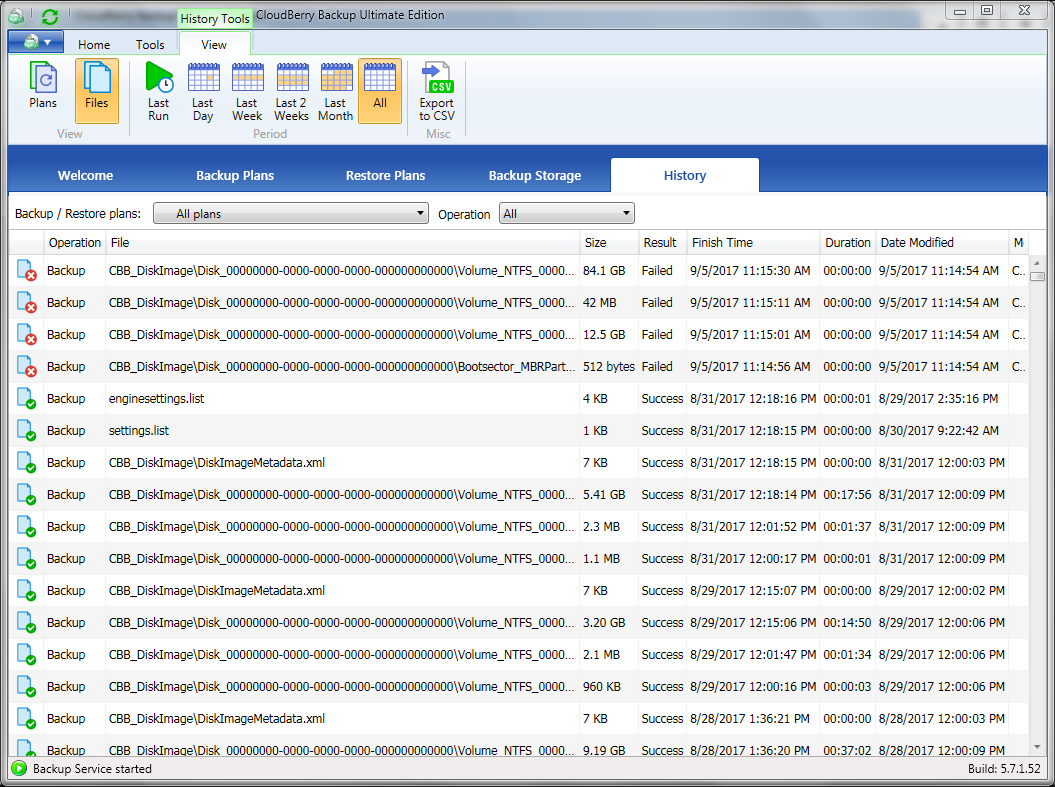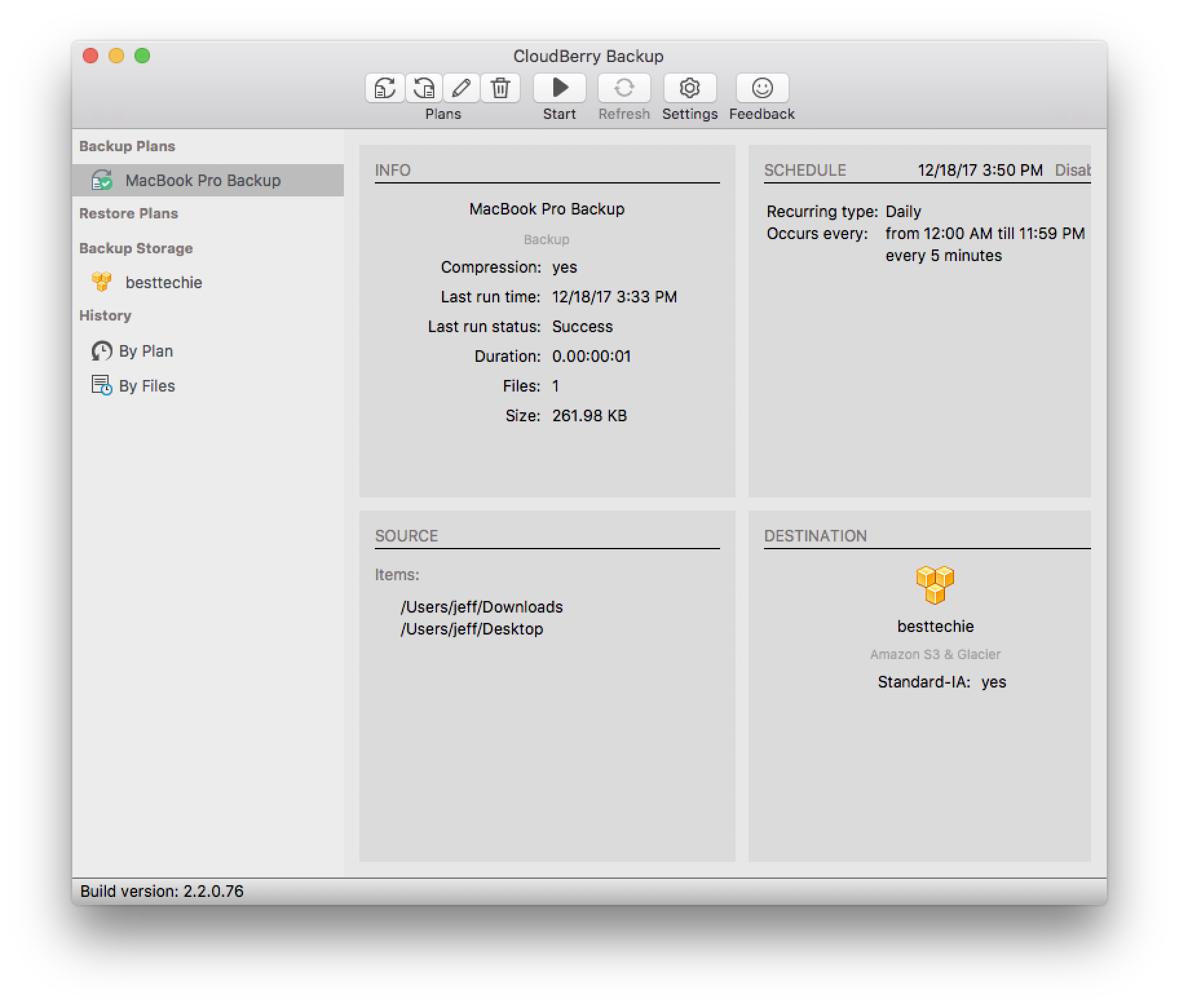

- Cloudberry backup weekly daily monthly windows 10#
- Cloudberry backup weekly daily monthly pro#
- Cloudberry backup weekly daily monthly software#
- Cloudberry backup weekly daily monthly code#
- Cloudberry backup weekly daily monthly free#
For the instance type, I choose the smallest, a t2.nano and click on Next: Configure Instance Details. So, I pick the default Amazon Linux 2 AMI (HVM), SSD Volume Type and click Select. It does not matter what AMI base image I use for this testing. Once in the service, I click on Launch Instance. I add an EC2 to my VPC by going back to the AWS Console and clicking on the EC2 service. The subnet vpn3 will be used to host a private EC2 instance which I will use to test access to upon completing the vpn set up. The two subnets vpn1 and vpn2 will be used for the VPN Client association which I’ll get to in a bit. I do this by clicking on Subnets in the left navigation of the VPC Dashboard and then clicking the Create subnet button at the top. Next, I create three subnets in the vpn VPC. If you are like me and don’t deal with CIDR too often, try CIDR to IPv4 Conversation. I set a CIDR of 10.5.0.0/16 which gives me 65536 IPs to play with. I start by logging into the AWS Console and click on the VPC service. Here is my walk-through of testing the feature. OpenVPN running on an EC2 was and still is a solution, but it is a significant effort to get up and running and to maintain. Ever since I started using VPCs in the early 2010s, I’ve wanted a baked-in VPN solution for accessing resources in a VPC.

In case you are like me and missed it, too, AWS announced AWS Client VPN on December 18, 2018. I’m not sure how I missed the announcement from December 2018. I am very pleased with Speed Designs but disappointed that I needed a 3rd party cooling base at all. With a high load, they still stayed below 120 degrees F.Īfter using the cooling base now for about a week, temperatures have not spiked over 120 degrees F and I’ve had 0 system crashes or screen lockups. With my same load, the numbers were between 106 degrees F - 111 degrees F.
Cloudberry backup weekly daily monthly software#
I launched my usual apps again and brought up iStat Menus sensor monitor software up.Īmazing improvement. I took off the bottom cover and reset the Mac mini in the cooling base. iFixit has a good photo and instructions for its removal. If I had read the instructions first, I would have noticed that I needed to take the bottom plastic base off of the Mac mini.

I spent $149 on a nice looking paperweight. I thought that odd, but figured, I’d continue to test out the cooling. One, the Mac Mini slid around in the base.
Cloudberry backup weekly daily monthly free#
I set my Mac Mini into the circular base of the mount and plugged in the USB-A cable into a free port on my Mac Mini. What I received was a very solidly crafted piece of machined aluminum. The $149 price tag was a bit daunting, but I decided to roll the dice and order anyway. I liked how the Mac Mini would sit tightly in the mount and that it was lifted off the ground to more easily intake air from the bottom.

After a few Google searches, I found a company called Speed Designs which has a promising looking cooling base. I decided to look into cooling fans to see if bringing the temperature down would alleviate some of the odd system behavior and stop it from crashing. However, like a human fever, I did suspect the high core temperature a symptom. There were no interesting tidbits in the console logs. I never did get any system warnings, but I did get screen lockups and system crashes every few days. If the temperatures were a problem, the system would alert me or even shutdown macOS.
Cloudberry backup weekly daily monthly pro#
This usage was fairly common with my previous Macbook Pro but temperatures were not nearly as high.
Cloudberry backup weekly daily monthly windows 10#
If I increased the load to include a few more containers and Windows 10 VM, I would get temperatures like the following:
Cloudberry backup weekly daily monthly code#
I also was running Visual Studio Code with a Docker Container of my development environment. I was running the usual suspects, a few browsers with maybe 10 total tabs, Apple Mail, Slack, and Messages. With a fairly light load, the Mac mini’s temperature sensors were between 178 degrees F - 194 degrees F. Honestly, I do not know if it is was a problem from the git-go, as I was not monitoring the temperature sensors from day one. I didn’t want to take a step down in performance while doing my daily tasks.Īfter a few weeks of use, I began to notice an uptick in the CPU core temperature readings. With the 6-core processor and 32 GB of RAM, the little box felt snappier than my 2016 laptop which was a relief. A few months ago, I ended up selling my 2016 Macbook Pro and turned my backup computer, a 2018 Mac Mini, into my daily driver.


 0 kommentar(er)
0 kommentar(er)
